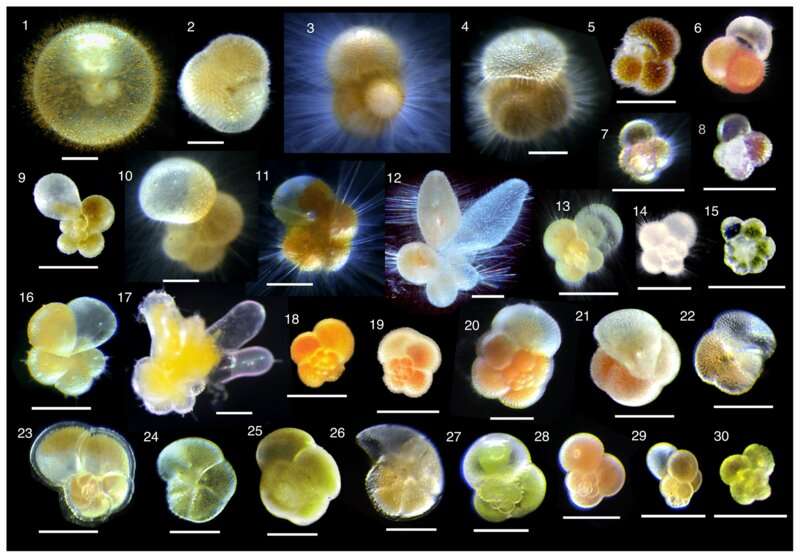What Sea Animals Live In The Twilight Zone

A team led past scientists from Cardiff University has, for the showtime time, been able to track the evolution of the largest and least understood habitat on World.
The bounding main'southward twilight zone extends from 200 to 1000 meters beneath the surface.
In a new study published today in Science, the squad has shown how life there became established and diversified, driven by the cooling of the ocean over the last 15 million years. The new findings raise concerns about how the array of creatures that alive at these depths may react to hereafter heating of the oceans.
A broad range of mysterious creatures live within the twilight zone of the sea, including plankton, jellies, krill, squid and fish. It is a true hidden treasure of biomass and biodiversity that is primal to the health of our oceans. Life in the twilight zone relies on "marine snow"—organic matter that sinks down from the surface—as a source of food.
In their report, the team used tiny fossil shells obtained from mud at the bottom of the sea to track how the deep-bounding main creatures inverse and diversified over time. "During our study, we observed evidence of species migrating from the surface to progressively deeper regions of the oceans over the 15-million-year catamenia, which was puzzling," said paleontologist Dr. Flavia Boscolo-Galazzo, i of the 2 lead authors of the study.
"The temperature of the water turned out to be key to the mystery," said pb author Dr. Katherine Crichton, now at the University of Exeter, who developed a calculator model simulation of the way the marine carbon cycle adult through time.
"The interior of the oceans has cooled markedly over this period. That had a refrigeration effect, significant that the sinking marine snow is preserved longer and sinks deeper, delivering food."
"The cooling of the deep ocean gave life a boost and allowed it to thrive and diversify," said Dr. Boscolo-Galazzo. The team used drill-cores of abyssal mud from all of the globe'due south oceans, recovered by the International Ocean Discovery Plan (IODP), to build up a history of plankton communities over millions of years.
The mud independent fossil plankton, which the team analyzed to reveal not just the depths at which the creatures lived just also how actively the marine snow was sinking around them. This fossil evidence was able to show very clearly how dependent life at depth is on seawater temperature and how it evolved through time. The team say the results heighten concern nearly the future ocean every bit it heats up nether the pressure level of global climate change, and it is now following this up with further research.
"Many of the strangest forms of life are found in the ocean depths including rummage jellies that await similar conflicting spaceships and ugly fang-tooth fish. But they are likewise vital for the ocean's nutrient webs" said project leader Professor Paul Pearson, honorary research professor at Cardiff University's School of Earth and Environmental Sciences. "Deep-living fish business relationship for a billion tons of biomass and are a major food source for whales and dolphins and also large diving fish like tuna and swordfish."
More data: Flavia Boscolo-Galazzo et al. Temperature controls carbon cycling and biological development in the ocean twilight zone, Science (2021). DOI: ten.1126/science.abb6643
Citation: Evolution of ocean 'twilight zone' creatures linked to global climatic change (2021, March 12) retrieved fifteen May 2022 from https://phys.org/news/2021-03-evolution-ocean-twilight-zone-creatures.html
This certificate is subject to copyright. Apart from whatever fair dealing for the purpose of individual study or research, no office may exist reproduced without the written permission. The content is provided for information purposes only.
Source: https://phys.org/news/2021-03-evolution-ocean-twilight-zone-creatures.html
Posted by: bowleytroses.blogspot.com

0 Response to "What Sea Animals Live In The Twilight Zone"
Post a Comment